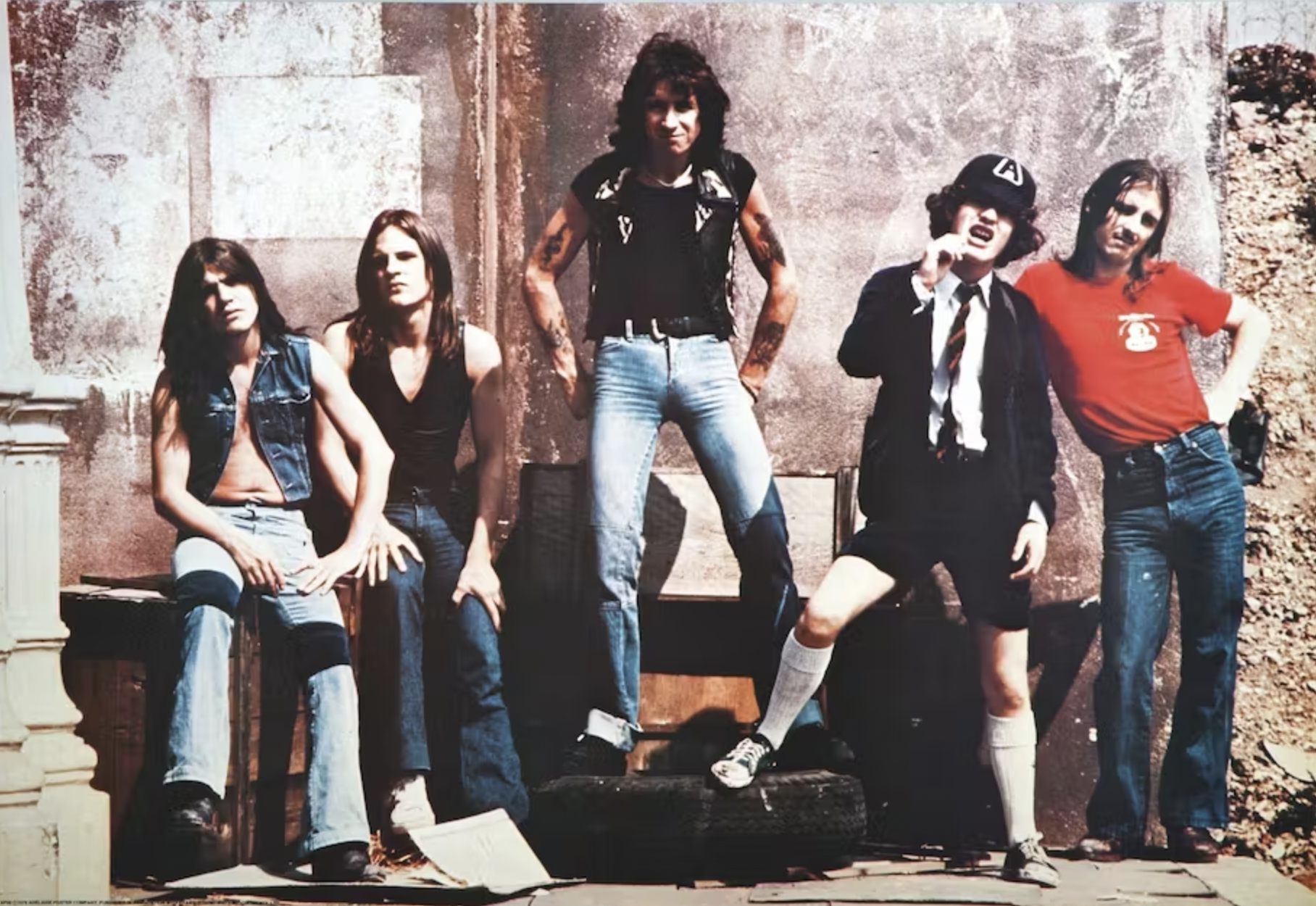AC/DC Is Medieval Chant with Guitars
/Years ago, I don’t recall where or in what publication, I read a profile of an artist. One of the comments she made was that she loved to turn music up loud in her house and she noted that she often played either Gregorian chant or AC/DC.
At the time, I thought this was just artistic pretentiousness. I sort of rolled my eyes and basically didn’t believe her.
But yet, the fact that she said THAT haunted me, and I didn’t forget it even though I didn’t try to remember it. AC/DC and Gregorian chant. Hmm.
Now, years later, I must embarrassingly say that this artist was actually offering us a really brilliant insight, and that she is spot on.
I just came to the party much later. But I’m grateful for this awesome and provocative point that she made. I’ve completely repented of my scoffing at her remark. Because Gregorian chant and AC/DC are much more alike than not.
Let me explain.
Gregorian chant is the most musical and most advanced form of medieval plainchant. It is rightly one of the highlights in any college level musical appreciation class, and it is truly an historic achievement. Plainchant is the monophonic sacred music that was used in Christian liturgical settings during the medieval period and well before. How long before? Well, that’s a typically modern question to ask, “when does plainchant begin?” And in modern terms, we just don’t know. It begins at the beginning.
But we do know Gregorian chant emerged as the predominant form of plainchant in Western Europe from the 9th century onwards. It is the apex of plainchant. Gregorian chant represents a culmination of centuries of musical development and liturgical practice. And here is where it gets interesting. Gregorian just sounds awesome, because it is characterized by distinct and distinctive (recognizable and memorable) melodies (and harmonies), and clear rhythmic patterns.
When listening to Gregorian chant, you can hear and follow the introduction of a musical idea, and you can continue to follow it, even as additional layers come in over it. The whole then grows ever more richly layered, but only with two or three or maybe four layers. Rich but without becoming muddy, loose, overwhelming, suffocating or burdensome.
Now, if you’re an AC/DC fan, you already see what is happening here.
I was not into “heavy metal” growing up, so I was a latecomer to AC/DC. But how is their sound distinguishable from other “heavy metal” acts (note I don’t think now AC/DC should be categorized as heavy metal; they are a thing unto themselves)?
Just exactly like Gregorian chant. Distinctive (!) melodies, clear (if indeed aggressive) rhythmic patterns. They introduce a musical idea which you can follow, then, they layer over the top of that. The result is a song of several layers, but layers you can peel back and still hear on their own.
Interestingly, both Greg chant and AC/DC could be described as minimalist, at least as compared to other music within their musical universes.
Greg chant of course is not minimalist compared to what came before. It’s actually more textured and complex – which is why it just sounds better to us than older plainchant. But it’s minimalist compared to what came after in the vast repertoire of Western “classical music”. Fast forward multiple centuries and you land on Wagner. You can say lots of things about Wagner, but minimalist is not a word you would use.
Compared to contemporaries, especially “heavy metal” bands, AC/DC is clean, clear, crisp; melodic, tight, structured, coherent, accessible. Personally, I would place the band within the realm of punk, and the timeline works for that. But apparently AC/DC hated punk and just wanted to be considered “rock and roll.”
I suppose that’s their prerogative.
Also, both Gregorian chant and AC/DC use repetition very successfully. (That’s how we recognize a “melody” after all. You don’t just hear it once). Both musics also move back and forth between solo and group singing, with the soloist often having the role of introducing the next musical idea. But not an unlimited number of musical ideas. Just a few “riffs,” enough to keep things moving forward and staying interesting but also maintaining unity and cohesion.
Finally, like Kiss and Guns N ‘Roses, AC/DC seems to be especially good live. (I’ve only seen videos on YouTube). They are not really studio musicians in the sense that they want to perfect every minute detail in a complex, sophisticated and dense musical product. They didn’t aspire to Abbey Road or Dark Side of the Moon. They wanted to show up and entertain and put on a show.
And obviously Gregorian chant is all about live performance, as it were. We are blessed to have recordings, but we must note that a recording of Gregorian chant is basically artificial and that Greg chant would most authentically be heard in a sacred spaces (cathedrals, monasteries, and churches), as part of a liturgical service and where the acoustic qualities of the space enhanced the ethereal and reverberant sound of the chant. But live performance is what matters most. (And aren’t “ethereal” and especially “reverberant” good adjectives to apply to AC/DC?).
So, bottom line. Music is music. Genres are taxonomic tools and they are very helpful, for those purposes.
The fact that they “hated” punk tells me that they are punk rockers. Punk rockers typically don’t traffic in half-hearted opinions. What could be more punk that to hate punk?
But if you are a music lover, it’s good to move above and beyond genres and just listen. If it sounds good to you, then it’s good music. And it’s also fun to try to figure out why you think all the things that sound good to you are similar.





